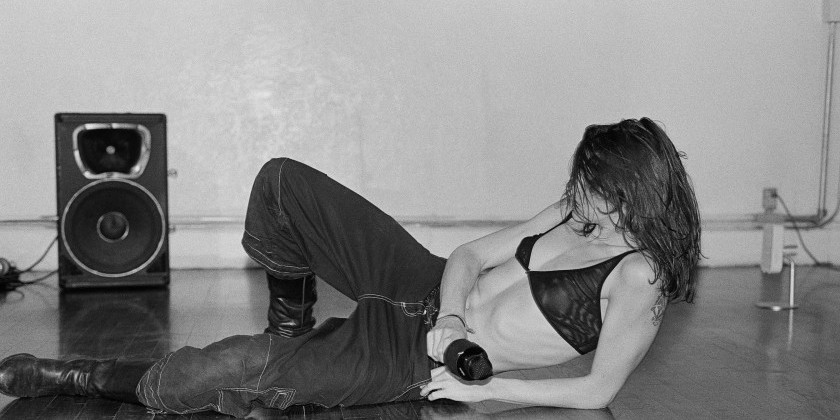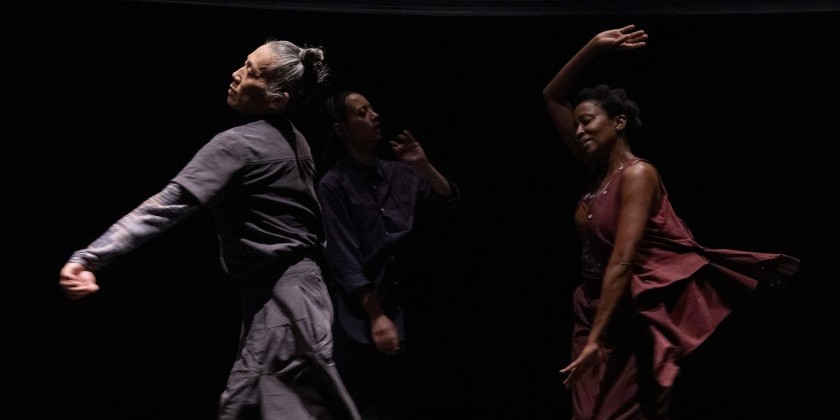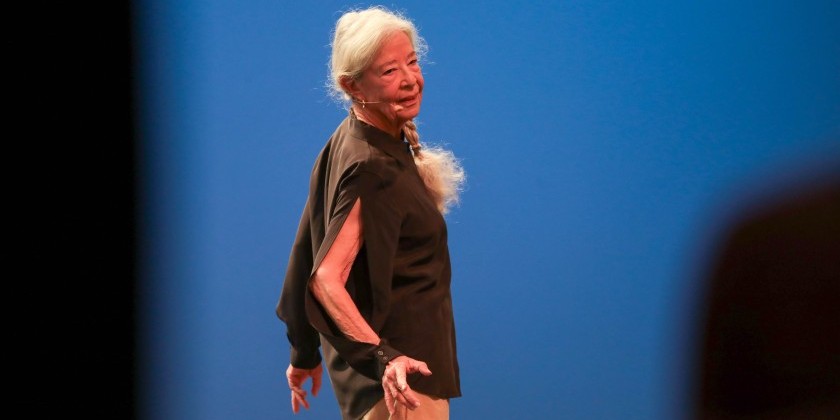IMPRESSIONS: Marguerite Hemmings and LaJuné McMillian Develop an “Antidote”
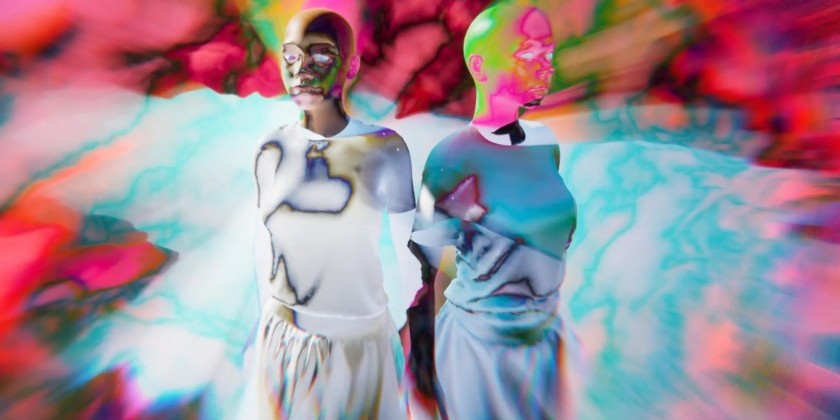
Physical Movement Meets Digital Technology at Abrons Arts Center
Choreography: Marguerite Hemmings
Videography: LaJuné McMillian
Text: Marguerite Hemmings and LaJuné McMillian
Performance and video assistance: Mishayla Carcana, Lamar Francis, Nethaniel Jackson-Soto, Shania Jones, Kane Lane, Fatoumata Louise Maiga, and Sebastian McMeans from University Neighborhood High School and South Brooklyn Community High School
Production: Abrons Arts Center and Pioneer Works
Ali Rosas-Salas, Artistic Director of Abrons Arts Center, introduces the evening as an arts education experiment to answer questions of race, gender and climate change, all of which have a profound impact on the lives of young people and future generations.
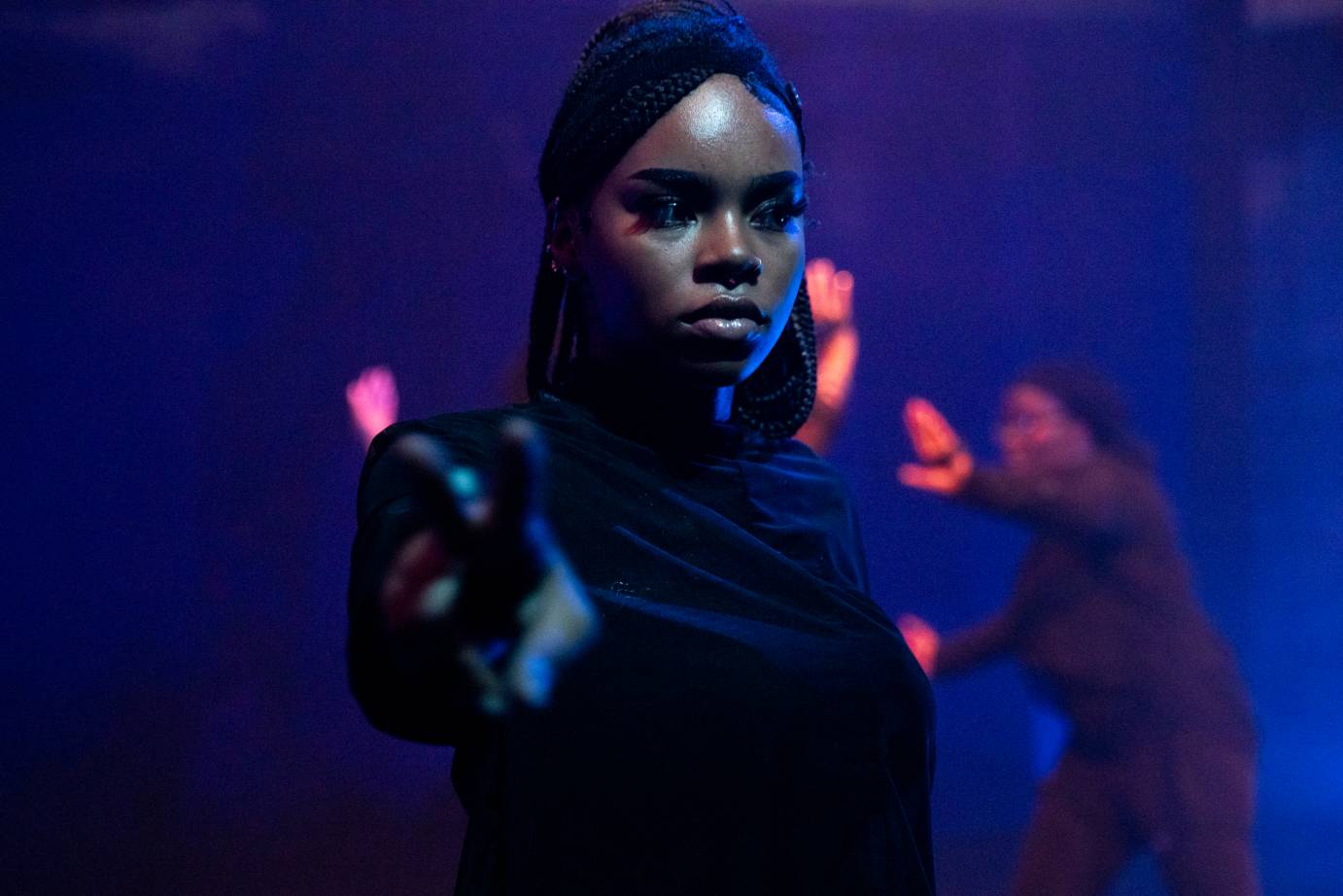
After the introduction, the opening ritual acknowledges that “our lives are not our own.” The audience then repeats Antidote statements that agree to relinquish several assumptions—binary, colonial structures of hierarchy, white gaze, male gaze and gendered gaze in order for the work’s images, sounds and words to live beyond replication, ownership, and extraction. Following this collective acknowledgment intended to offer cathartic awareness, the audience forms a circle on stage to experience the space “around us and through us” and to receive ablution from ancestor guides. Returning to our seats, we are “now calibrated to experience this work.”
The voiceover text written by Hemmings and McMillian barrages the viewer with centuries-long inequities against peoples of color (less emphatically, the environment), offering Antidote as a vessel for restorative healing and atonement. The work opens with a broadcasted, smokey fog that envelopes the dancers. The performers, Mishayla Carcana, Lamar Francis, Shania Jones, and Fatoumata Louise Maiga, illustrate the recorded words with simple movements. Fingers softly travel across the chest, eyes glance down to the hands, and arms rise horizontally outward while the dancers bend forward, stand in place feet apart or move front and back.
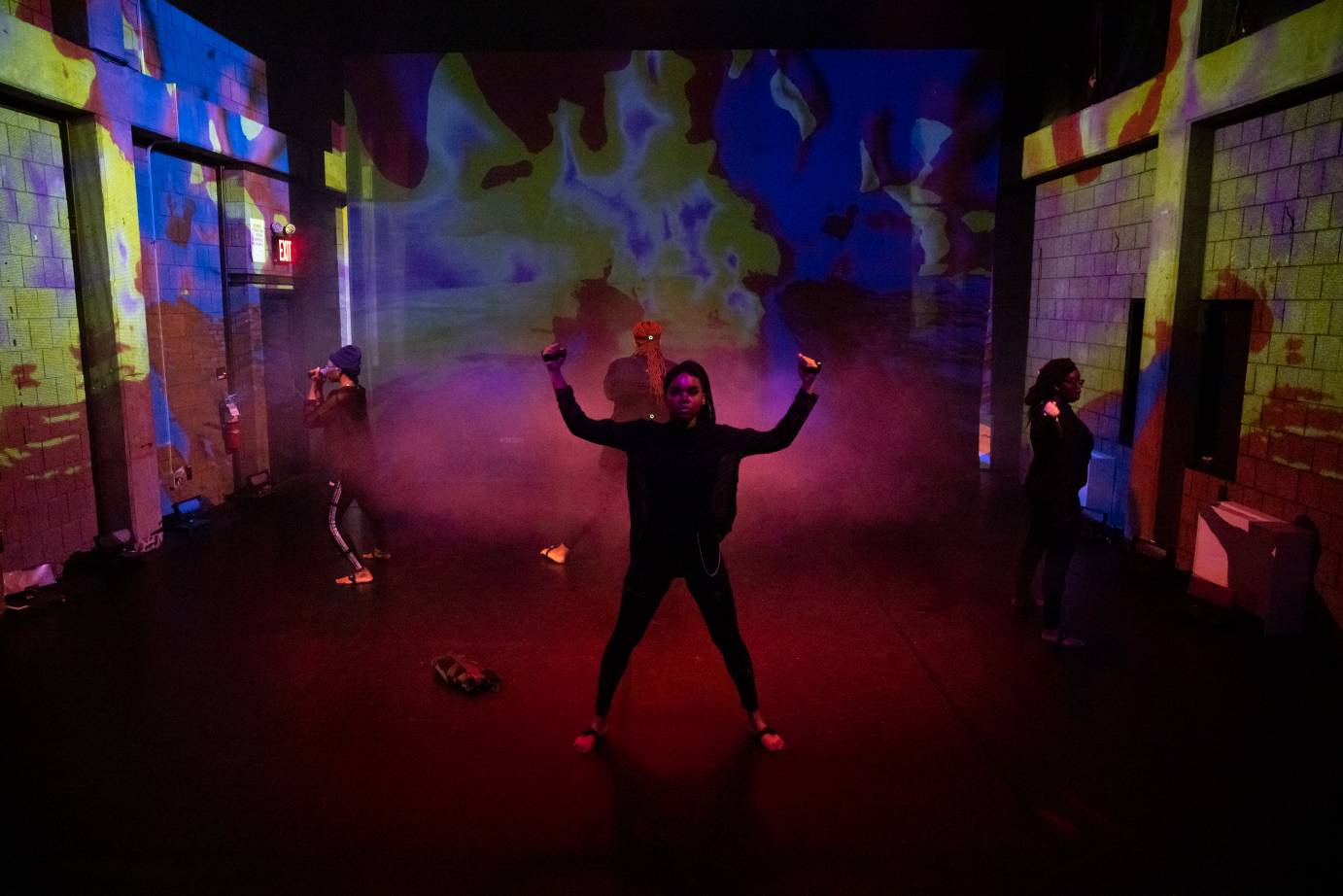
Each dancer inhabits the four corners of the stage and constructs a distinctive, personal shape. Three dancers converge, sway and wrap arms around each other. A ghost-like motion-capture (the process of recording movement digitally and projecting the images) dancer retrieve and fiercely hurl a wrapped foot-long article, representing the trauma and anger of the participants. In contrast, dancers gently entwine hand and foot, arm and knee, and lie on one another in an extended monumental center-stage repose before rolling away to find their “own way forward”.
McMillian’s compelling projection assisted by students Nethaniel Jackson-Soto, Kane Lane and Sebastian McMeans includes a giant, plangent orange sun, smoke and fire rising from at-first quiet and then roiling water, and lush lilac blossoms that grow and push into the space. Images of the churning sea allude to the Black bodies enslaved on Middle Passage ships. The text asserts that the auction block, Jim Crow, segregation, one-drop rule and global anti-Blackness “will not be forgotten.” The text proclaims that the lives of native peoples who were subjugated and trammeled “will not be forgotten.” Live performers and projected dancers exist concurrently. Motion-capture dancers who resemble faceless, filled-in apparitions project onscreen and animate the history of nameless, thrown-away bodies. Their descendants, in contrast, are a living and breathing accusation who provide hope for a new, inclusive vision.
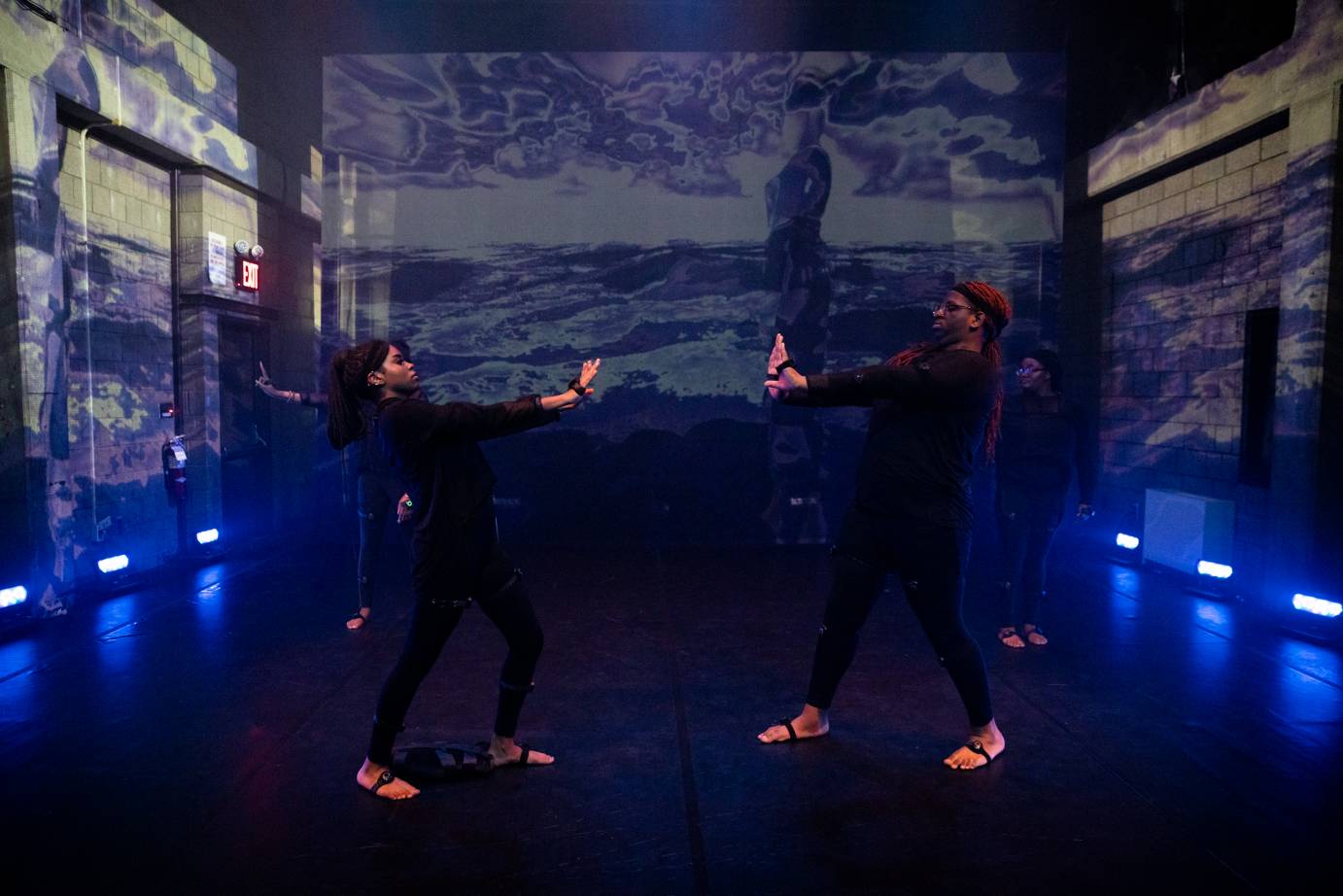
Recorded text continues to envelop the space as the dancers’ committed, controlled and intent performance focuses the work. Toward the end of Antidote, the dancers progress unremarkably from one side of the stage to the other behind an upstage scrim. Perhaps this is a metaphor for the hidden and slow pace of change. Overtaken by an arresting projection of green bubbles on a black background that well up, swirl and lunge, Antidote begins to offer a corrective remedy for many of our past and current inequities.
Supporting personal growth and collective liberation, the thrust of this work primarily points to the necessity of arts education. Guiding the young to critically ponder the future of our global community cultivates students who will become involved citizens and leaders. Arts education's transformative effects contribute to the health of civil society by positively impacting students’ academic, social and emotional outcomes. Empowering students to express themselves through the arts imparts a sense of purpose and respect for peers, teachers, family and community.
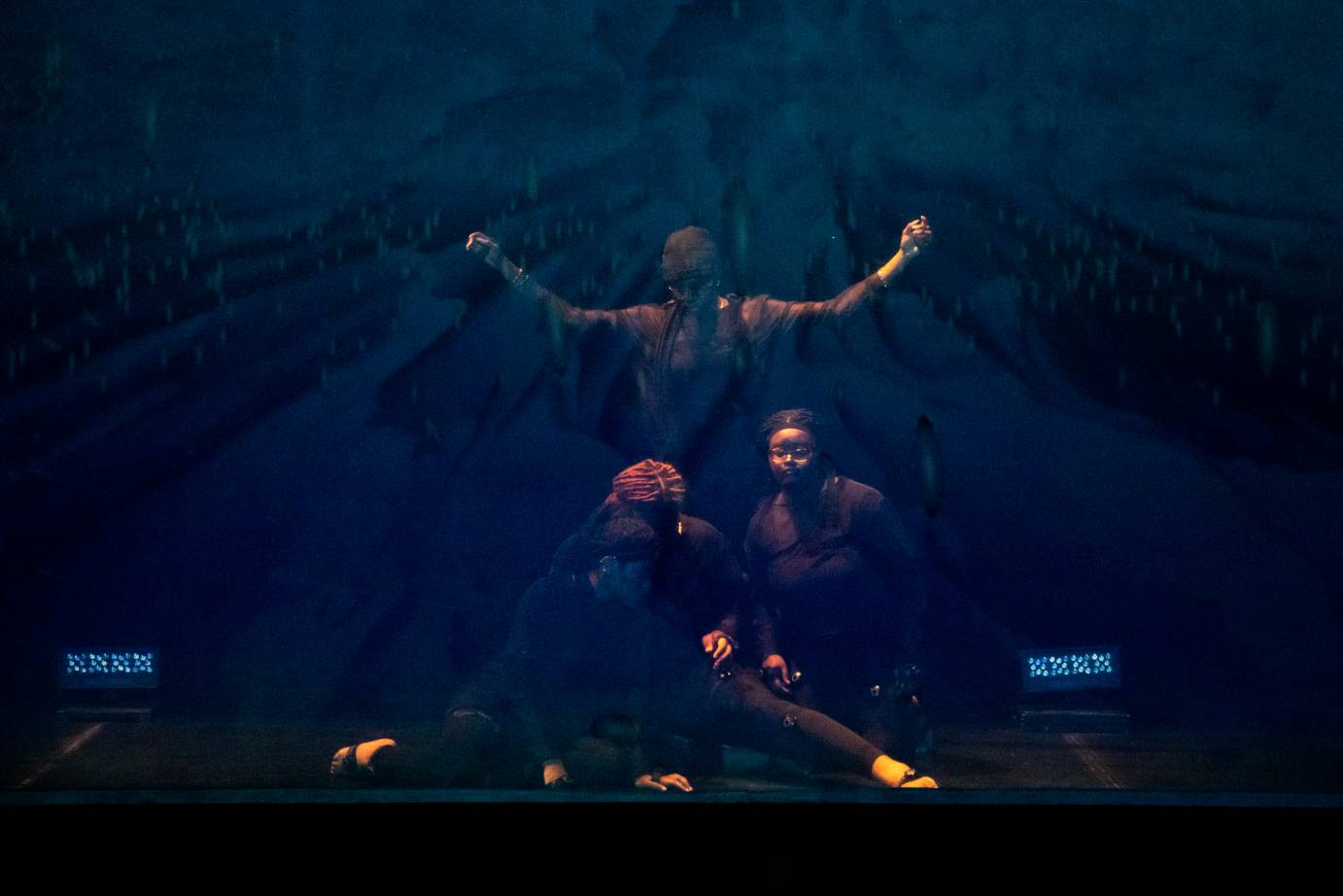
"In a time of heightened intolerance and pressing threats to our core democratic values", as stated by the Brookings Institute, February 2019, the arts are fundamental to equal opportunity. The United States Government Accountability Office's study on the arts and education (February 2009), however, found that schools with higher percentages of minority students were less likely to offer the arts in school. The awareness and correction of marginalization, Antidote's central tenets, advances an anti-racist platform of wide-reaching arts education for all.




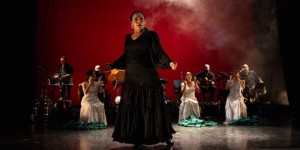
![IMPRESSIONS: Johann Diedrick Presents “[ the hurricanes in your mouth ]” at Abrons Arts Center](/images/features_small/Johann_Diedrick_hurricanes_Baranova-1085.jpg)

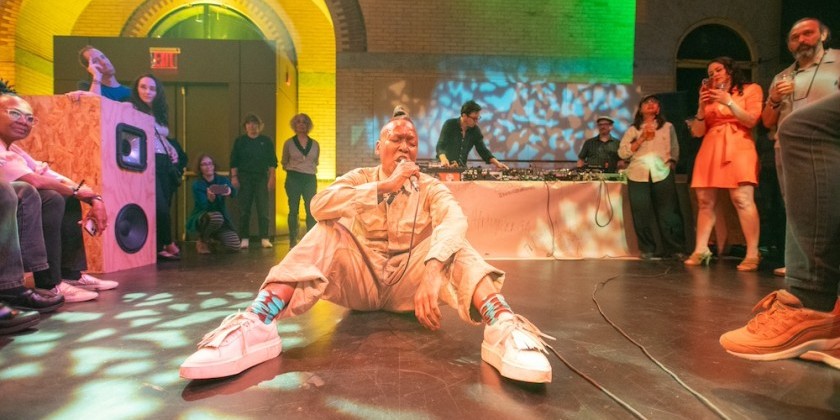

![IMPRESSIONS: Will Rawls' “[siccer]” at the Keith Haring Theatre at Performance Space New York](/images/features_large/20251119_WillRawls_siccer_PerformanceSpaceNY_WhitneyBrowne--55.jpg)
